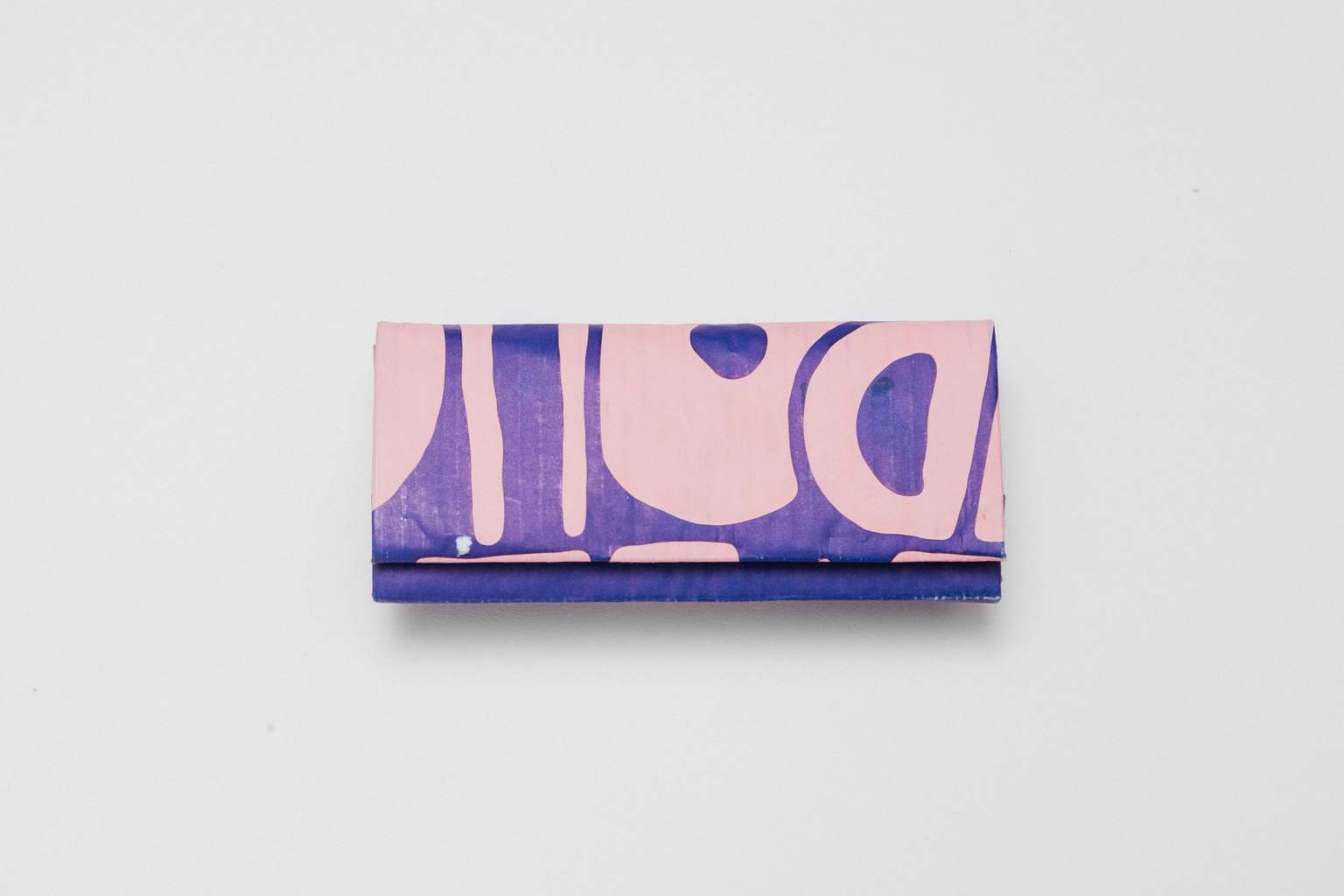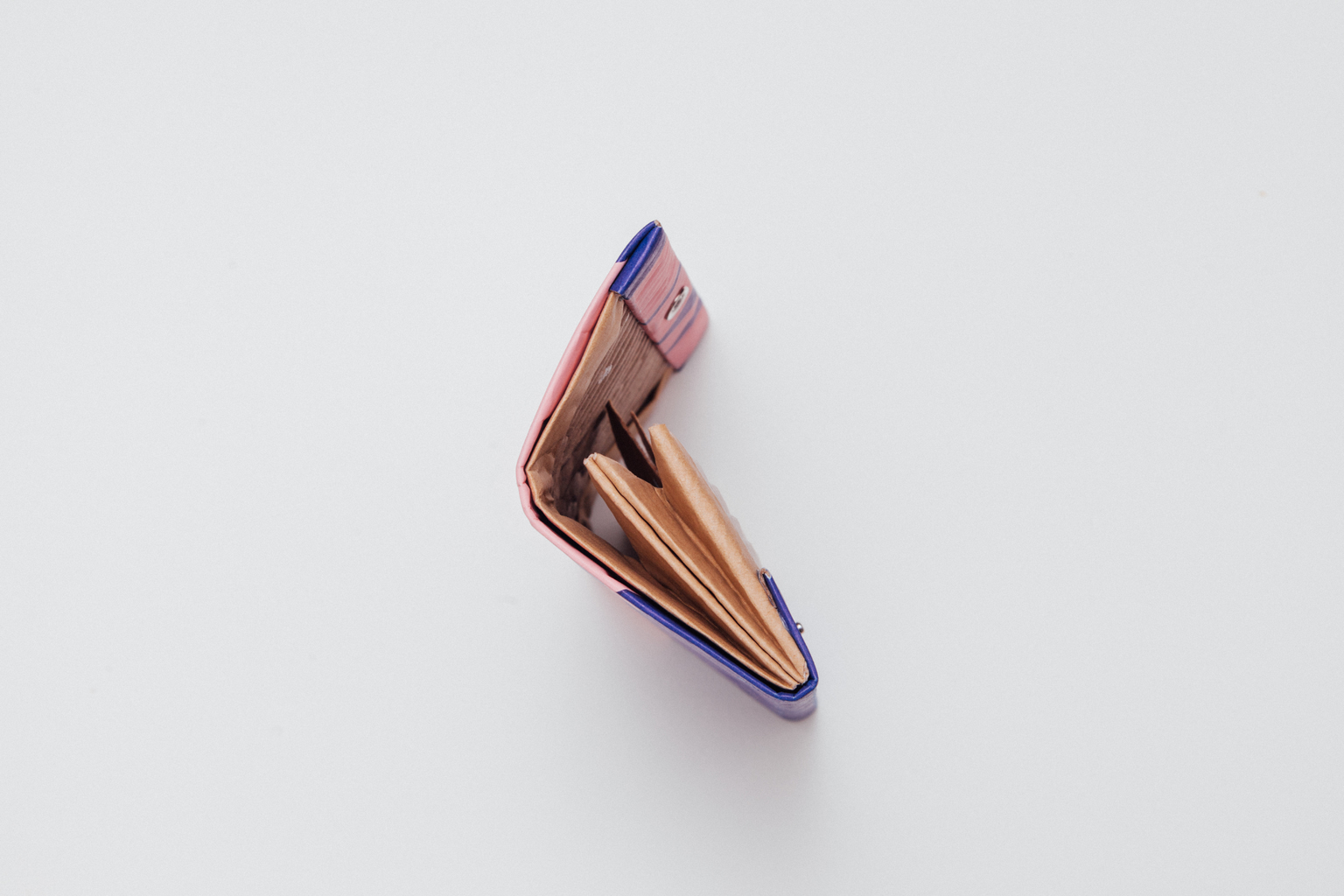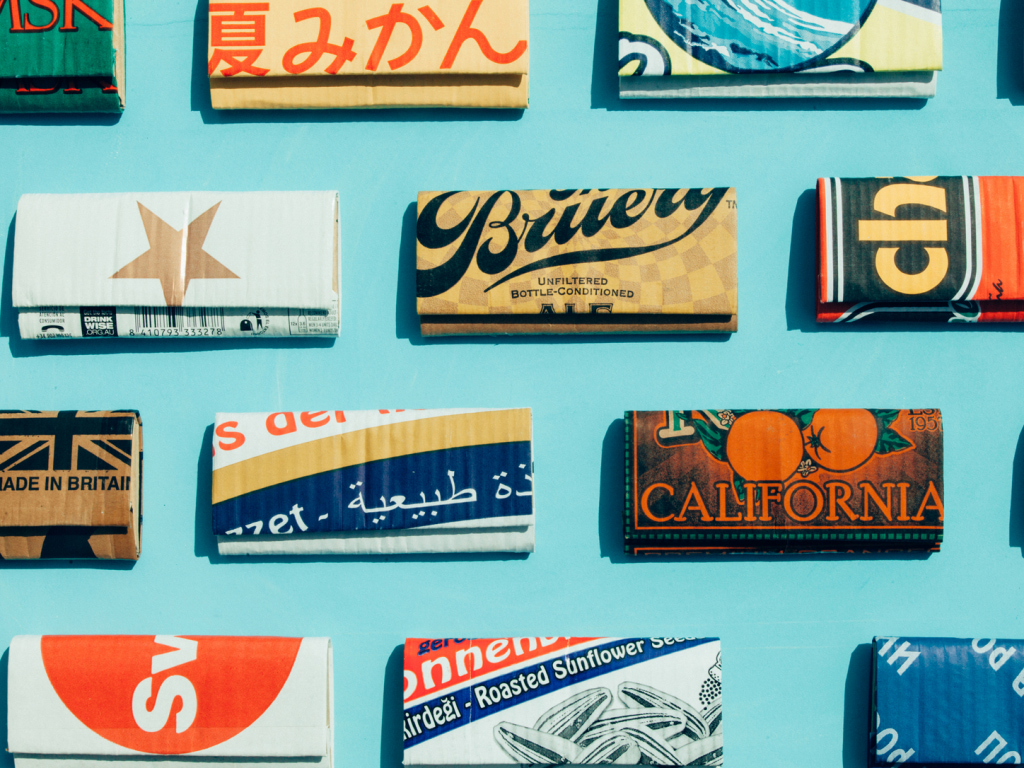As a struggling art student with no money to buy a replacement for his worn-out wallet, Fuyuki Shimazu decided it was time to improvize. Spotting a discarded but stylish-looking cardboard box used for the California wine company Redwood Creek, he thought it could be used to make his own creation and set about working on it.
That was just over a decade ago. Fast forward to today and Shimazu is now successfully earning a living from his cardboard wallets (and business card holders), which he sells through his company Carton for between ¥5,000 and ¥20,000. Through the years, he has collaborated with several major labels including North Face and Lexus while also running workshops around the globe. Last year a documentary movie about his work, titled From All Corners and directed by Ryusuke Okajima, premiered at the South by Southwest Film Festival in Austin, Texas.

“With the first wallet, I wasn’t thinking about the environment or making my own business, it was purely made from necessity,” Shimazu tells TW. “It was a simple design with tape and cardboard. I was a bit embarrassed to get it out in shops as some of my friends thought it looked strange. The intention was to use it for a month after which time I would have enough money to buy a new one. It actually turned out much more durable than I expected and I ended up using it for a year.”
Realizing it worked as a product, Shimazu decided to try and sell some wallets for ¥500 at his university’s art festival. His professor at the time thought it was a good idea and subsequently encouraged the innovative student to take the product to flea markets and select shops. The following year, Shimazu saw an opportunity to vary his designs while on a trip to New York.
“What left the biggest impression on me, though, wasn’t Central Park or Times Square but the cardboard boxes I saw”
“It was my first time visiting a foreign country and I was just there for sightseeing purposes,” recalls Shimazu. “What left the biggest impression on me, though, wasn’t Central Park or Times Square but the cardboard boxes I saw. They looked cool with designs that were very different from the Japanese ones I was used to. Prior to that trip, I hadn’t thought about making wallets or card holders from foreign materials. It was an exciting discovery for me.”
After graduating from Tama Art University, Shimazu was ready to take the business to the next level. His professor, however, persuaded him to first accumulate some working experience, so he accepted a job as art director at giant advertising and PR firm Dentsu. Although his career there took off, his heart wasn’t truly in it, he tells TW, so during his fourth year he quit to pursue his true passion of cardboard art.
Since then Shimazu’s focus has been on building up his company, for which he produces around 600 wallets a year. Carton is known as a brand that employs upcycling, a term first used by Thornton Kay in a 1994 SalvoNEWS article in which he quoted German engineer Reiner Pilz. He said that rather than downcycling, “what we need is upcycling where old products are given more value not less.” In other words, creatively reusing an item to make something that is of better quality or more beneficial for the environment.


Continuing to develop his products, Shimazu has become an important figure in the upcycling movement. He now uses buttons and glue as opposed to the tawdry tape and potentially dangerous staples with which he started. The most time-consuming thing about his work is gathering the main material as he travels around the globe in search of unique cardboard designs. So far, he’s been to around 30 countries – and his travels have brought with them some interesting experiences.
“One time when I was walking with some boxes in Paris people started shouting ‘terrorist,’” recalls Shimazu. “I didn’t know how to respond as I couldn’t speak the language. I guess people find it odd that this Japanese guy goes abroad looking for cardboard. I always get stopped at airport immigration. In Israel, officers grilled me for four hours. Once I eventually got through it turned out to be one of the best countries for finding material. Jerusalem was particularly exciting. I picked up a Coca-Cola box with Hebrew writing. As some countries don’t have diplomatic relations within Israel, this kind of design is not widely available.”
Not all the boxes Shimazu collects are used for making wallets. His favorite carton designs are stored in a cupboard at home, including his “Cardboard of the Year” selections for 2017 and 2018: A humanitarian aid box for Syrian refugees that he found in the garbage of Bulgaria’s capital, Sofia, and a box for Valencia oranges from Australia with images of six kangaroos.
“Whenever I discover cardboard that interests me, my imagination starts racing,” exclaims Shimazu. “Where has it come from? Why have they chosen this design? That kind of thing. Each box has a story and I was particularly intrigued by the kangaroo one. From the pictures, there was no indication that it had anything to do with oranges. Having worked for an advertising company in art design, that seemed strange to me. I would love to be able to find out where the idea came from.”
“What most people simply see as a piece of trash can actually be a treasure in someone’s life”
In the documentary From All Corners, Shimazu manages to track down Hitoshi Maruo, the original designer of a yellow-green box he stumbled across at a market in Tokyo. Made in the Sixties, it was used to ship Tokunoshima potatoes. After visiting the company’s warehouse, Shimazu learns that Maruo lives in Nagasaki and decides to head to his home. In the film’s most touching scene, Shimazu presents the retired man with a wallet created from the very cardboard he had designed more than half a century earlier.
“His wife was in tears and I had a lump in my throat,” says Shimazu. “What most people simply see as a piece of trash can actually be a treasure in someone’s life. That’s the beauty of upcycling, a word I wasn’t even aware of before we started filming. My concept is ‘from unimportant to important.’ Sometimes a lot of effort goes into designing cardboard boxes and then they are usually thrown away and forgotten about. I want to try and revive the artwork by transforming them into new products.”
Shimazu’s passion for his craft is evident throughout Okajima’s documentary. He lives and breathes cardboard, focusing on the visual aesthetics of boxes that most people would never even begin to consider. He’s particularly interested in their scratches and dents. At the moment his focus is on making wallets and business card holders, but in his apartment there is even a cushion made from cardboard. So, is he thinking of branching out?
“I am always thinking about different things I can do with thrown-away boxes,” says an enthusiastic Shimazu. “The cushion is just something I am trying at home to see if it’s something that could work. There are so many possibilities with cardboard, I don’t want to limit myself to just small items. My long-term goal is to create a cardboard museum.”
More info at carton-f.com










